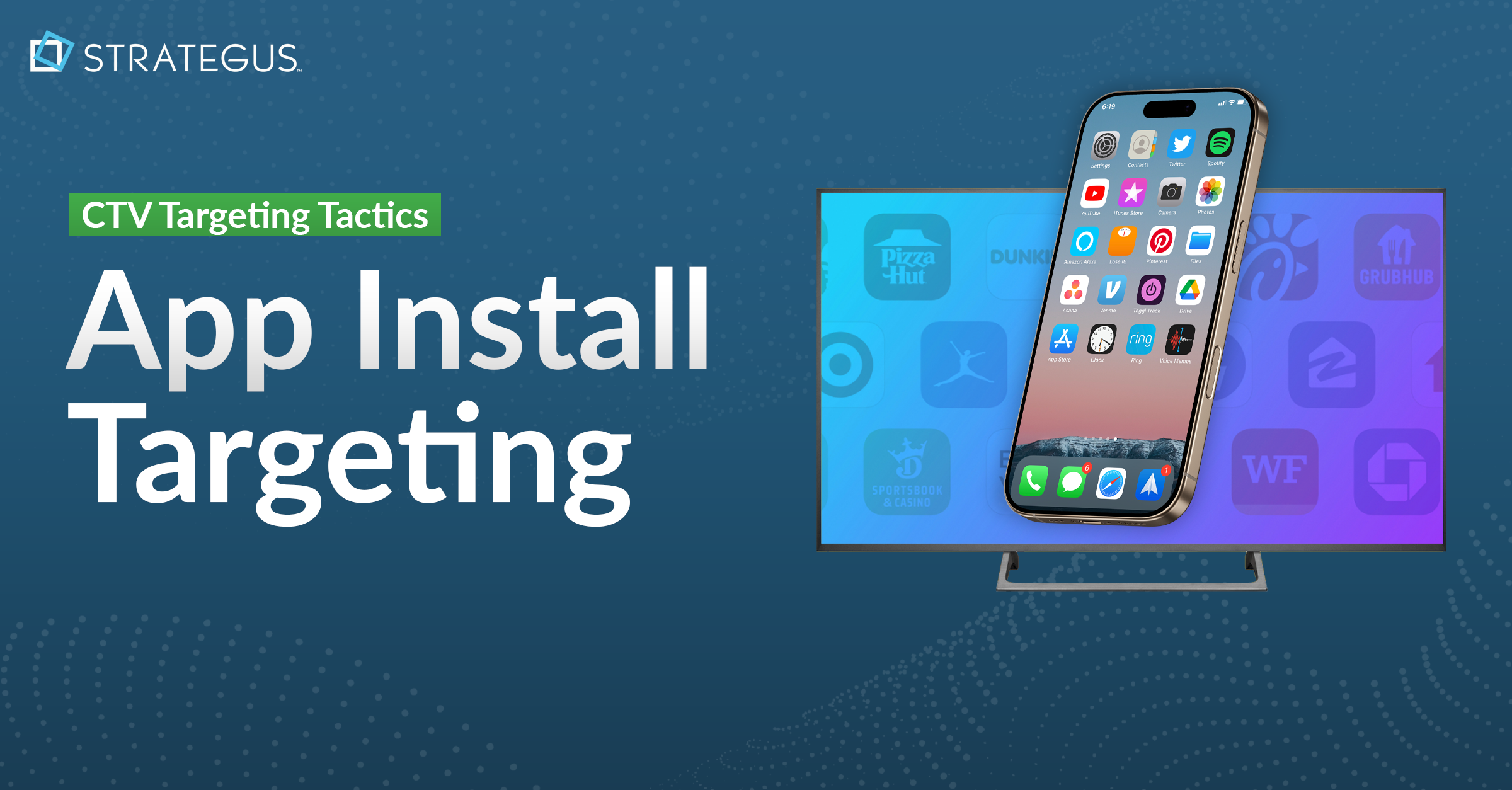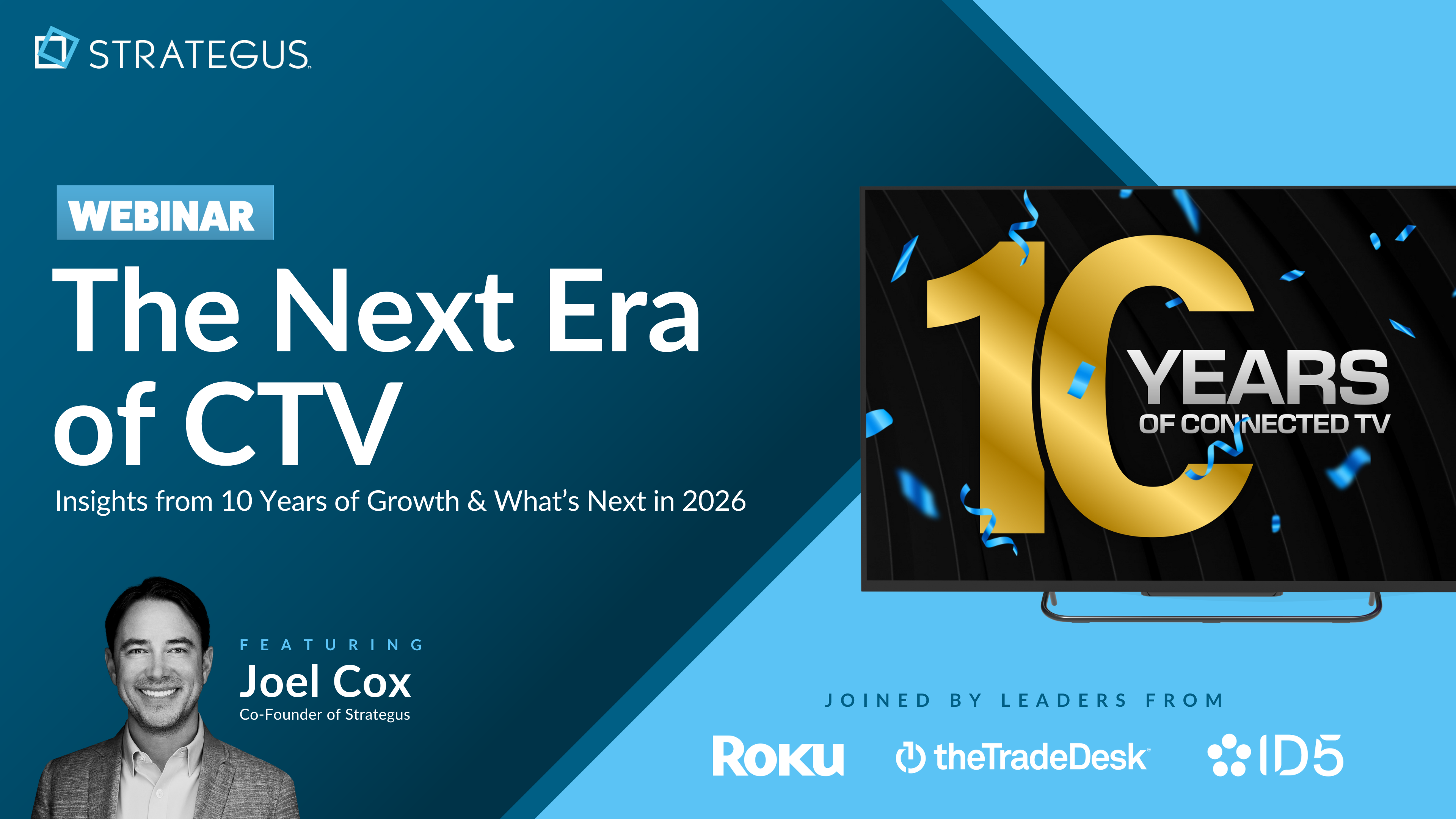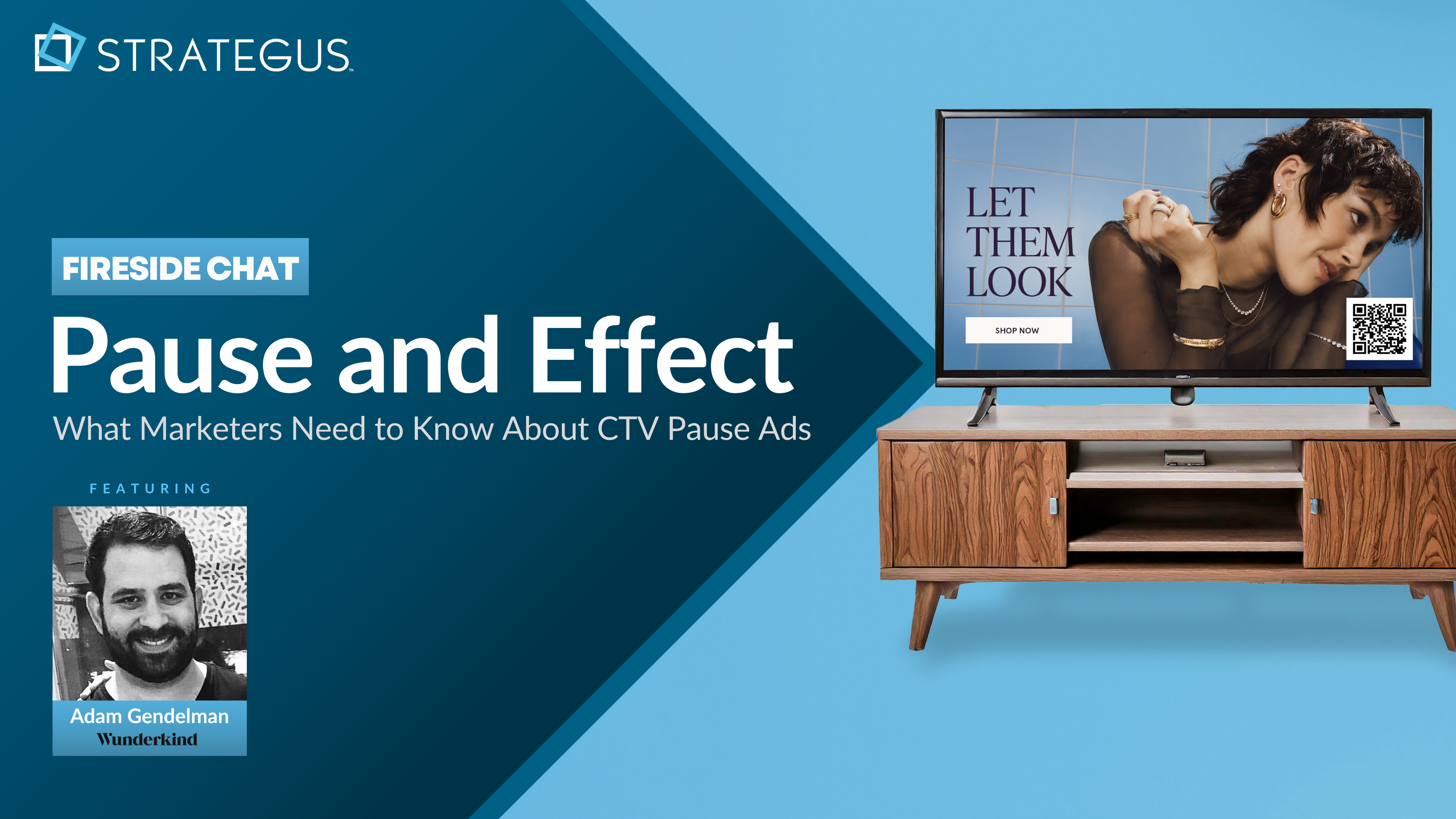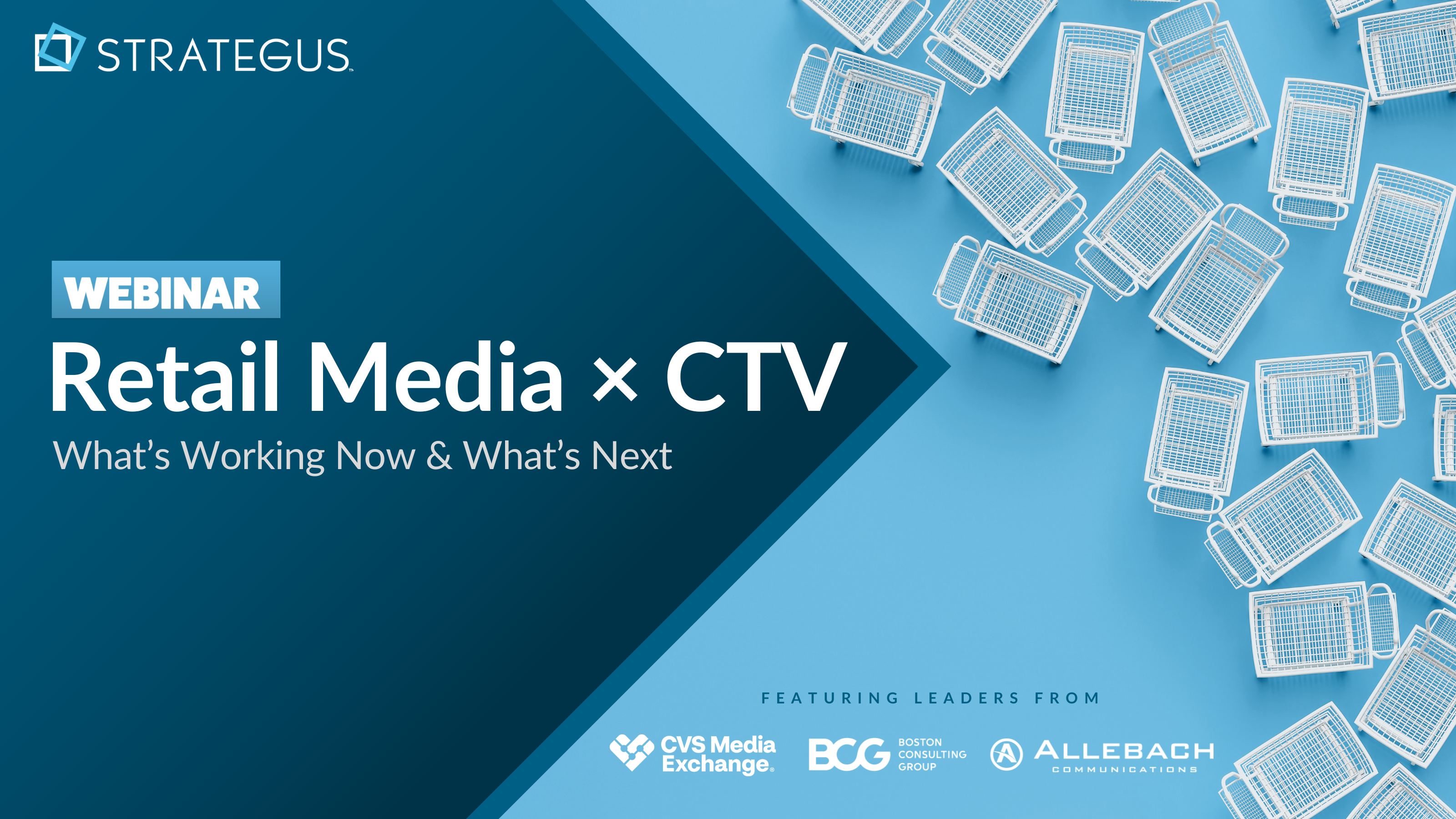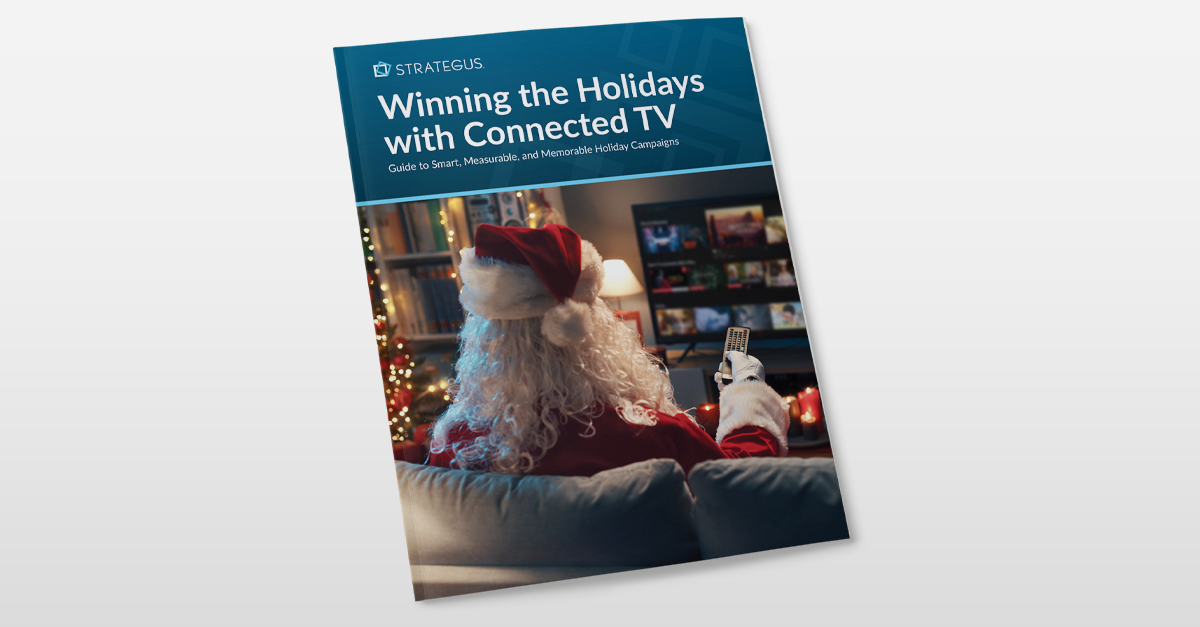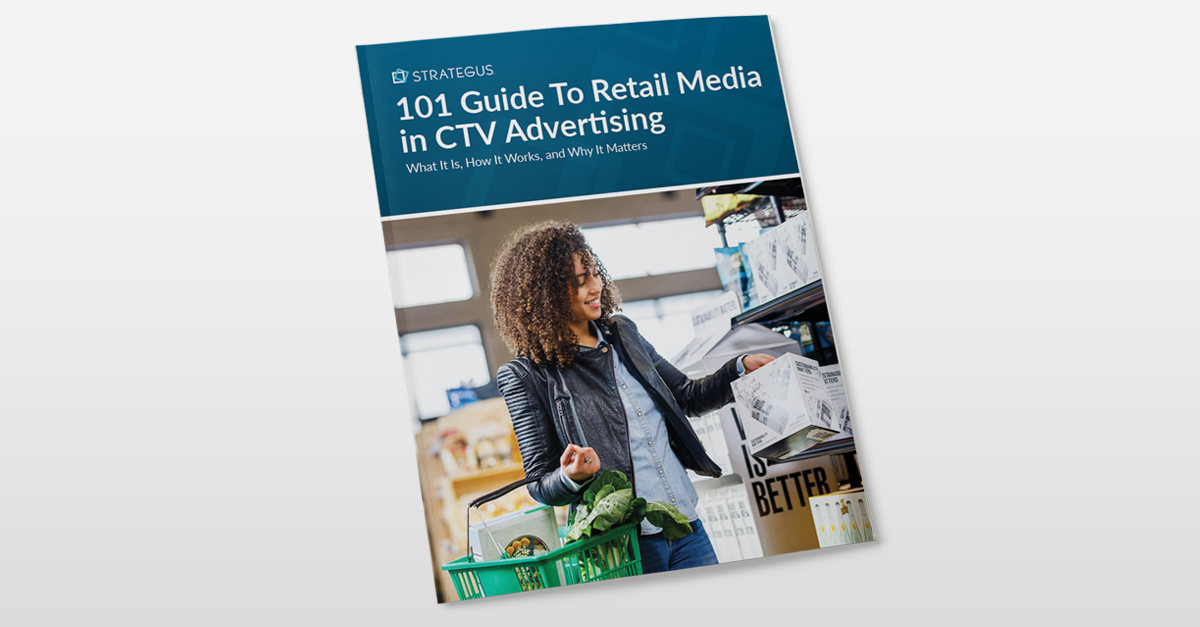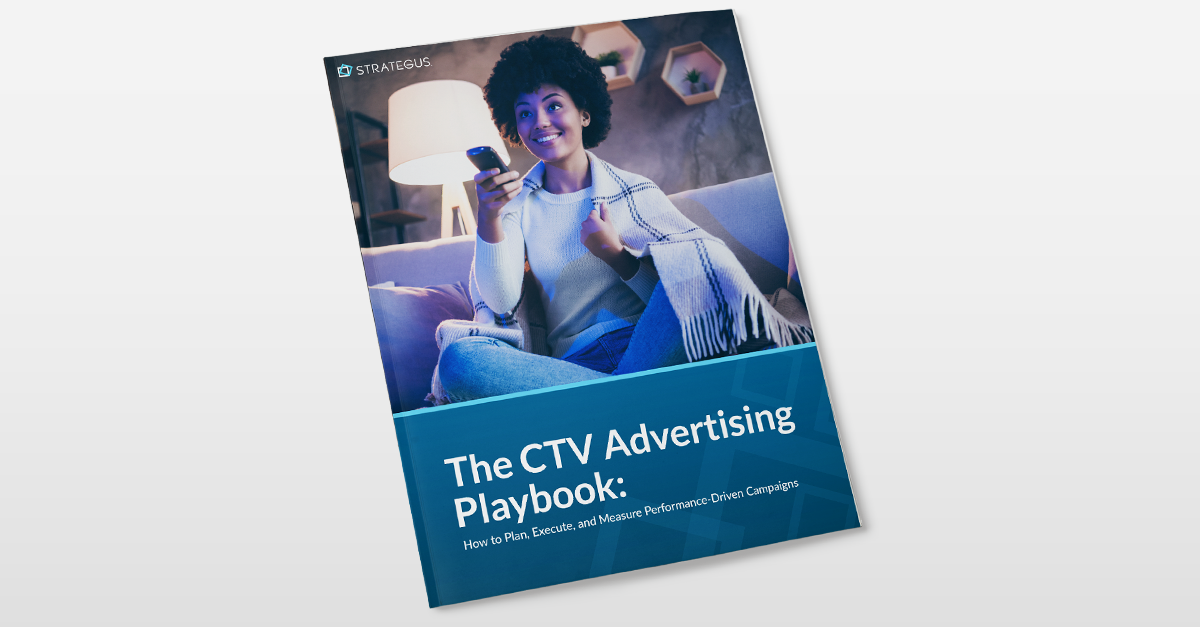- Home
- Strategus Blog
- Streaming Advertising 101: How To Advertise on Streaming Services
Streaming Advertising 101: How To Advertise on Streaming Services
13 minutes read

People no longer just “watch TV” like they used to. They’re now streaming. OTT platforms like Netflix, Hulu, and Peacock have changed how we watch shows and movies, and that’s also changed how brands reach viewers.
This guide breaks down how streaming ads work, the types you can run, and how to reach the right audience without wasting your budget.
Key Takeaways
- Streaming advertising places targeted video ads inside internet-delivered content on platforms like Hulu, Netflix’s ad tier, Tubi, and YouTube TV.
- Advantages include precise audience targeting, premium inventory environments, and measurable outcomes such as completion rates, clicks, conversions, and CPA.
- Fewer than half of U.S. households use cable, while 87% have connected TVs, with CTV ad spend projected to surpass $40B by 2027.
- Key steps: choose a platform mix, select formats (pre-, mid-, post-roll, interactive, shoppable), set budget and bids, launch with targeting, and track KPIs.
- Optimize continuously with A/B tests, bid adjustments, and frequency caps; shift budget toward segments driving higher completion and conversions across AVOD, FAST, and premium CTV.
- For privacy-safe streaming campaigns with premium inventory and real-time reporting, we can help. Speak to a Strategus expert to learn more today.
What is Streaming Advertising?
Streaming advertising places video ads within shows, movies, and other content watched over the internet rather than traditional cable or broadcast TV. When viewers watch content on services like Hulu, Netflix's ad-supported tier, or free platforms like Tubi, they see commercials before, during, or after their programs, just like traditional TV, but with a key difference.
Unlike TV commercials that show the same ad to everyone watching a channel, streaming ads can be targeted to specific households based on viewing habits, location, or interests. A sports equipment company might show ads only to households that regularly watch sports content, while a local restaurant targets viewers within their delivery radius.
The biggest advantage is measurement. Streaming platforms track whether viewers watched the entire ad, skipped it, or took action afterward. This is all data that traditional TV can't provide. This helps advertisers understand which ads work, adjust their campaigns mid-flight, and calculate actual return on investment. For brands used to traditional TV's guesswork, streaming advertising offers the creative impact of television with the accountability of digital marketing.
Why Advertise on Streaming Services?
Streaming has changed how people watch TV and movies, giving brands new ways to reach viewers who are actually paying attention. Platforms like Hulu, Peacock, and YouTube TV now play a major role in how people watch content, which makes them valuable spaces for advertisers.
1. Reach More Viewers
Fewer than half of U.S. households still use cable, while 87% now have a connected TV. This shows a clear move toward streaming. Advertising on these platforms helps brands reach not only younger audiences but also cord-cutters who prefer watching online instead of through traditional TV.
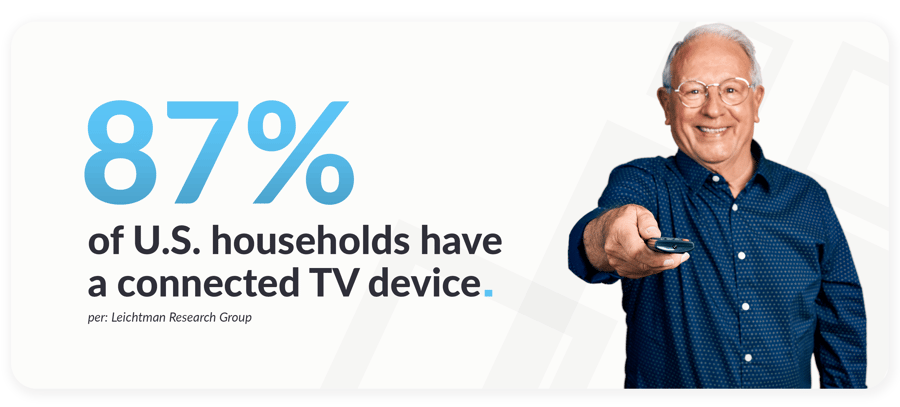
2. Target the Right Audience
Streaming services let advertisers target viewers by age, interests, location, and even what they watch. This helps brands spend their budgets wisely and reach people most likely to care about their message. Real-time data also helps marketers track performance and make quick changes for better results.
3. Run Ads in Quality Environments
Streaming ads usually appear next to high-quality, trusted content. Formats like non-skippable video ads make sure viewers see the message from start to finish. Some platforms also offer interactive ad options that let people take action instantly, improving engagement and brand recall.
Learn More About Premium Inventory →
4. The Future Is Streaming
By 2027, CTV ad spending is expected to exceed $40 billion in the U.S., As more people stream instead of watching cable, this channel gives brands the reach, targeting, and results they need to grow.

How to Advertise on Streaming Services
If you’re looking to set aside a portion of your marketing budget for streaming services, there are a few do’s and don’ts you need to be aware of.
1. Pick the Right Streaming Mix
There is a long list of streaming services in the market right now, and for a successful campaign, you need to choose the right combination based on your goals, audience, and budget. At Strategus, we don’t favor any one platform. Instead, we focus on getting the best results across the full streaming landscape.
From premium options like Hulu, Peacock, and YouTube TV to FAST (Free Ad-Supported Streaming TV) channels such as Pluto TV and Tubi, every platform serves a different purpose. Some focus on live content, while others specialize in on-demand shows, niche audiences, or detailed targeting options.
By using a platform-agnostic strategy, we make sure your ads reach the right viewers, whether they’re watching live sports, bingeing their favorite series, or exploring free ad-supported content. The ideal mix depends on your goals, and every campaign is customized to deliver the most impact across connected TV.
2. Choose Your Ad Format
After you’ve picked your streaming platforms, decide which ad formats fit your goals and creative assets. Streaming platforms offer many ways to connect with viewers, each serving a different purpose:
- Pre-Roll Ads: These ads play before the main content starts. They usually last 15–30 seconds and grab attention right away. Pre-roll ads are great for building brand awareness or promoting a product because viewers see them before anything else.
- Mid-Roll Ads: Mid-roll ads appear in the middle of a show or between episodes. Since viewers are already engaged, these ads can run a little longer and tell a more detailed story. They’re useful when you want to explain your product or highlight a specific benefit.
- Post-Roll Ads: Post-roll ads play after the content ends. They help reinforce your message or encourage an action, like visiting your website or making a purchase. These ads work best for reminders or simple next steps after the viewer finishes watching.
- Interactive Ads: Interactive ads let viewers take part in the experience. They can include polls, quizzes, or clickable elements that lead to more details or shopping options. These ads keep viewers engaged and help brands learn more about what their audience likes.
- Shoppable Ads: Shoppable ads make it easy for viewers to buy products directly from the screen using a remote or connected device. They work well for retail and e-commerce brands that want to turn attention into instant action while keeping the shopping process smooth.
3. Set Your Budget and Bids
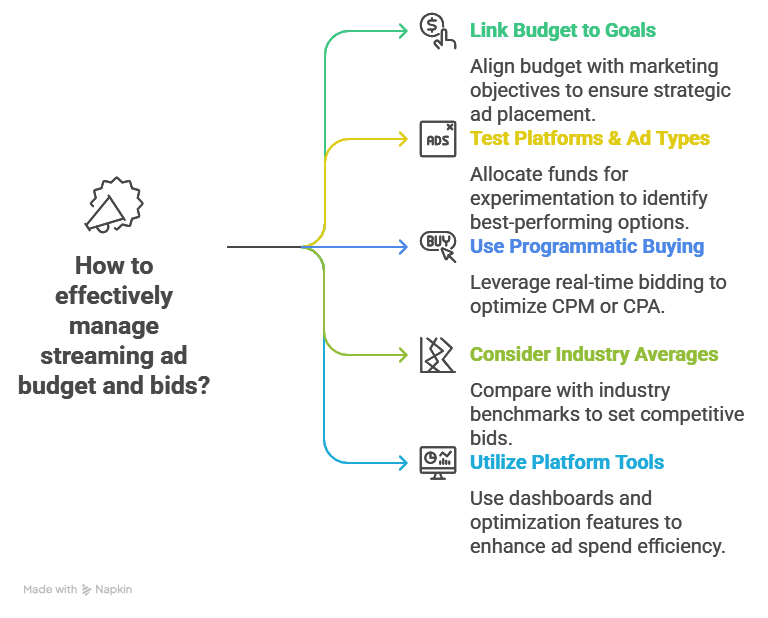
Your budget decides where and how your ads will appear. It affects which platforms you can use, what ad formats you can run, and how long your campaign will last.
Start by linking your budget to your marketing goals. Decide how big of a role streaming ads will play in your plan. Set aside some money for testing different platforms, ad types, and targeting options to see what performs best for your brand.
Most streaming ads run through programmatic buying, which lets you bid in real time based on your CPM (cost per thousand views) or CPA (cost per acquisition). This helps you reach the right audience at the best possible price.
When setting your target CPM or CPA, think about:
- Industry averages for streaming ads
- Data from your past campaigns
- The value of a customer you gain through streaming ads
- Your total budget and ROI goals
Streaming platforms also offer tools to help you manage and improve your ad spend, like:
- Real-time bidding dashboards
- Automatic bid optimization based on results
- Audience insights and targeting options
- Frequency caps to avoid showing your ad too often
4. Create Strong Ad Creative
To stand out on streaming platforms, your ad needs to grab attention fast and connect with the right audience. Here’s how to make your creative more effective:
- Keep It Short and Engaging: People don’t want to sit through long ads, so keep them brief and to the point. Aim for 15–30 seconds for pre-roll and mid-roll ads, and use 6-second bumper ads where possible. Shorter videos hold attention better and help your message land quickly.
- Tell a Story That Feels Real: Good ads tell stories people can relate to. Use emotion, humor, or real-life situations to connect with viewers. Show how your product solves a problem or improves their life. Storytelling makes your ad memorable and builds trust with your audience.
- Add Interactive Elements: Interactive ads let viewers take part instead of just watching. Use polls, quizzes, or clickable calls to action to keep people engaged. You can also use shoppable ads that let viewers buy or learn more directly from the screen without extra steps.
- Make It Work on Every Screen: Streaming ads show up on TVs, phones, and laptops, so design with all screen sizes in mind. Use high-quality images and clear text that look good everywhere. Bold visuals and simple layouts work best, especially on large screens where blurry graphics are easier to notice.
5. Run and Track your Campaigns
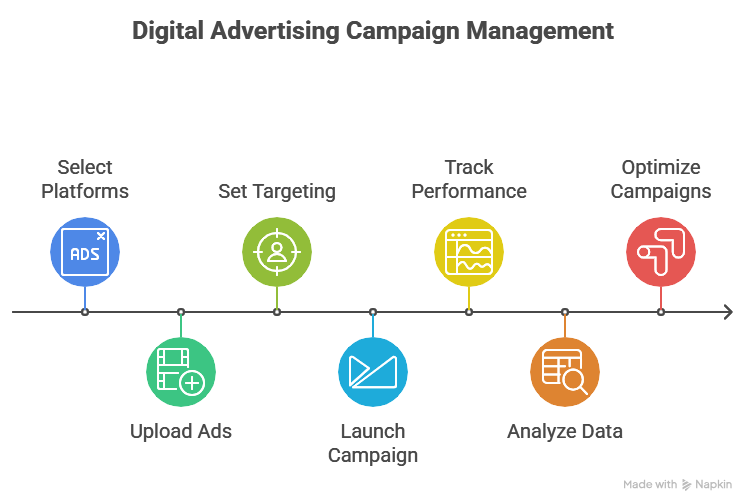
Once you’ve picked your platforms, ad formats, budget, and creative, it’s time to launch. Upload your video ads to the selected platforms and make sure they meet all the requirements for file type, resolution, and length.
Next, set your targeting options based on the audience data you’ve gathered. Most platforms let you target by demographics like age, gender, or income, interests and online behavior, location, device type and context (ads shown alongside related content).
Choose targeting that fits your goal. If you’re running a new product launch, reach a broad audience. If you want conversions, target based on interests or behaviors for better results.
After setting your targets, go live and start tracking your performance. Focus on these metrics:
- Impressions: How many times your ad appears
- Video completion rate: How many viewers watch it fully
- Click-through rate (CTR): How many click your call to action
- Conversion rate: How many take the desired action
- Cost per acquisition (CPA): How much it costs to get a new customer
Keep an eye on your analytics using each platform’s real-time dashboards. Compare how your ads perform across different platforms and targeting options. Look for patterns in engagement, conversions, and ROI, and use that data to fine-tune your campaigns and guide future creative decisions.
6. Optimize Based on Performance
Once your streaming ad campaigns are live, keep a close watch on the numbers. Track metrics like completion rate, click-through rate, and conversion rate to see which ads, audiences, and placements perform best.
Use this data to guide your next moves. Put more budget behind the ads that work well and adjust or pause those that don’t. Small, steady changes based on data will help improve your overall results and return on ad spend.
Here’s what you need to do:
- Test Different Versions: A/B testing helps you learn what your audience responds to. Try different versions of your ads like change the visuals, messages, or calls to action, and compare the results. Keep refining your targeting and creative based on what performs best to reach more engaged viewers.
- Adjust Your Bids: Review your bids regularly. If certain placements or audiences give strong results, increase bids to win more impressions. If some segments cost too much with low returns, lower your bids or move that budget to better-performing areas.
- Manage Ad Frequency: Frequency capping helps control how often people see your ads. Seeing an ad a few times can boost awareness, but too many views can cause frustration. Set frequency caps to strike the right balance, enough to be remembered, but not enough to annoy your audience.
Tips for Effective Streaming Advertising
Running ads on streaming platforms is simple, but getting great results takes strategy. Here are a few ways to make your campaigns perform better.

1. Know Your Audience
Start by understanding who you’re talking to. Learn about their age, interests, and viewing habits so your ads feel relevant. When your message matches what people care about, they’re more likely to watch, click, or buy.
2. Keep Ads Short and Interesting
Attention spans are short, so get to the point quickly. Use clear visuals, simple messages, and a strong call to action. A short, focused ad can hold attention longer and make your brand easier to remember.
3. Use Interactive Features
Make your ads more engaging by adding interactive elements like polls, quizzes, or clickable buttons. These features let viewers take part instead of just watching, which increases engagement and makes the experience more memorable.
4. Test and Improve Constantly
Keep testing and refining your campaigns. Try different visuals, messages, and targeting settings to see what works best. Regular optimization helps you spend smarter, reach better audiences, and get stronger results over time.
Partnering with Strategus for Streaming Advertising
Streaming ads are one of the best ways to reach engaged audiences, but running campaigns on your own can be complex. A self-serve setup gives you control, but it also demands time, skill, and constant optimization, something many teams struggle to manage effectively. That’s where experts can help.
With Strategus, you get a fully managed solution that handles every part of your campaign.
Here’s what Strategus offers:
- End-to-end campaign management– from setup to optimization.
- Precision audience targeting that ensures your ads reach the right viewers.
- Access to premium inventory across top streaming platforms.
- Real-time reporting with clear, actionable insights.
Looking for expert strategy and creative support for stronger performance and better ROI? Speak to a Strategus expert to learn more today.
Frequently Asked Questions
1. What Is the Minimum Budget for Advertising on Streaming Services?
Most major platforms like Hulu and YouTube TV start around $10,000, while smaller or niche platforms may allow lower budgets. Many services now offer flexible pricing, so you can begin small and scale up as you see results and refine your campaign goals.
2. Which Streaming Platforms Offer the Best Targeting Capabilities?
Hulu, YouTube TV, and Roku have some of the best targeting options. They let you reach people based on their age, interests, and viewing habits. These platforms use strong data and analytics to help your ads reach the right audience and improve engagement and conversions.
3. How Do I Track Conversions From My Streaming Ad Campaigns?
Streaming platforms such as Hulu and Peacock Ad Manager include built-in analytics dashboards. You can track key numbers like impressions, clicks, video completion rates, and conversions. This data helps you measure what’s working and adjust your campaigns for better performance.
4. What Are the Most Effective Ad Formats for Streaming Services?
Pre-roll and mid-roll ads are great for quick messages and brand recall, while interactive and shoppable ads help drive direct actions. Your choice depends on your campaign goals, whether you want to build awareness, drive engagement, or increase sales.
5. How Can I Ensure Brand Safety When Advertising on Streaming Platforms?
Choose trusted streaming platforms that offer brand safety tools like content filters and placement controls. Focus on premium inventory to make sure your ads appear next to quality content. This protects your brand’s image and keeps your message in a trusted environment.
6. How Can I Target Cord-Cutters and Streaming Audiences in My Campaigns?
Use CTV and AVOD inventory with audience segments that flag cord-cutters, heavy streamers, and genre fans. Layer demographics, geos, and viewing interests. Retarget site visitors on CTV and follow up on mobile or desktop. Set frequency caps, measure completion and conversions, then move budget toward segments that drive action.
7. How Do I Upload Audience Data to a TV Advertising Platform?
Most platforms accept first-party lists through a secure uploader or a CDP. Hash emails or device IDs, map required fields, and confirm match rates before launch. Refresh files often to keep segments current. Follow privacy rules, set lookalikes for scale, and exclude existing customers when you focus on acquisition.
8. How Long to Start Running Ads on a New TV Platform?
Simple launches can go live in a few days once creatives, tracking, and audience files are approved. Complex buys with multiple platforms, custom segments, or brand-safety reviews can take one to two weeks. Speed up setup by using platform specs, pre-tested video files, and a clear targeting plan.
9. How Do I Create Engaging Ad Content for Streaming TV?
Hook viewers in the first two seconds with a clear benefit. Keep videos 15–30 seconds, use close-up visuals, on-screen text, and a strong call to action. Show the product in use. Keep audio crisp. Test two or three openings and CTAs. Refresh creatives every few weeks to prevent fatigue.
10. How much does it cost to advertise on streaming services?
Costs vary by audience, format, and season. Most buys use CPM. Expect rough CPM ranges of $10–$20 for many AVOD/FAST channels and $25–$60 for premium CTV environments. Interactive or shoppable units can cost more. Tight targeting and high frequency raise costs. Broad reach and testing help control CPMs.
11. What streaming services have ads?
Most major platforms now offer ad-supported options. Examples include Hulu, Peacock, Paramount+, Max with Ads, Disney+ with Ads, Prime Video with Ads, Roku Channel, Pluto TV, Tubi, and Freevee. Each platform’s targeting, formats, and minimums differ. A mixed plan lets you combine premium shows with wide AVOD reach.
12. What’s the best platform to launch a streaming TV ad campaign?
There is no single best platform. Pick based on your goal. Choose AVOD/FAST for efficient reach, premium networks for brand safety and tentpole moments, and programmatic access for flexible targeting and optimization. Start with a small cross-platform mix, measure completion and conversions, then shift budget to top performers.
Strategus is a managed services connected TV(CTV) advertising agency with over 60,000+ campaigns delivered. Find out how our experts can extend your team and drive the result that matter most.
Talk to an Expert
Seeking a Custom CTV Strategy That Delivers?
What to read next
App Event Tracking: Tie Mobile App Activity to CTV Campaigns
Let’s say you’re running a CTV campaign for a personal finance app.
5 minutes read

Stop Guessing Who Your Audience Is — Let Their Apps Tell You
Connected TV (CTV) targeting often falls in one of two camps.
8 minutes read
See Who Bought After Your Ad + How Much They Spent
You can’t improve what you can’t measure. And for years, that’s been a major problem with TV advertising.
4 minutes read

First-Party Attribution: Match Ads to Sales With CRM Data
The value of first-party data continues to grow.
7 minutes read



